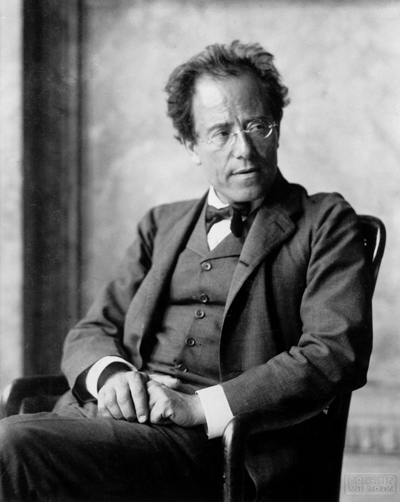Mahler, Urlicht
Des Knaben Wunderhorn is a collection of German folk poems compiled and edited by Achim von Arnim and Clemens Brentano. First published in 1805, it became a popular source of texts for German Romantic composers as the prevailing aesthetic shifted away from the ideas of the Enlightenment. One consequence of this shift meant that folklore, in general, became a serious field of study across Europe.
 We associate Gustav Mahler (1860-1911) more closely with Des Knaben Wunderhorn than any other composer because he wrote two dozen settings of texts from the collection. So, yes, we tend to think of Mahler as a symphonist, but his Lieder (songs) are just as important. In addition, he incorporated melodies from his songs, many from Des Knaben Wunderhorn, into his early symphonies.
We associate Gustav Mahler (1860-1911) more closely with Des Knaben Wunderhorn than any other composer because he wrote two dozen settings of texts from the collection. So, yes, we tend to think of Mahler as a symphonist, but his Lieder (songs) are just as important. In addition, he incorporated melodies from his songs, many from Des Knaben Wunderhorn, into his early symphonies.
Urlicht (primeval light) forms the fourth movement of his Symphony No. 2 (“Resurrection,” literally “Primal Light”). Don’t misunderstand: Mahler treats the Resurrection quite seriously in this symphony, and the Wunderhorn text makes a significant contribution.
The Mahler Foundation website includes this description of Urlicht in the context of the symphony:
Very solemn but simple (In the manner of a chorale). After the “tormenting” questions of the opening movement and the grotesque dance of the Scherzo, humankind is freed from uncertainty and doubt. The Wunderhorn-Lied brings with it the first ray of a light that will shine in glory at the end of the finale. A solemn chorale, gently stated on the brass, affirms the innocent faith of childhood; later on, an expanded version of this same ascending theme will become the final movement’s “Resurrection” theme.
The relatively brief text of Urlicht with English translation can be found here.



